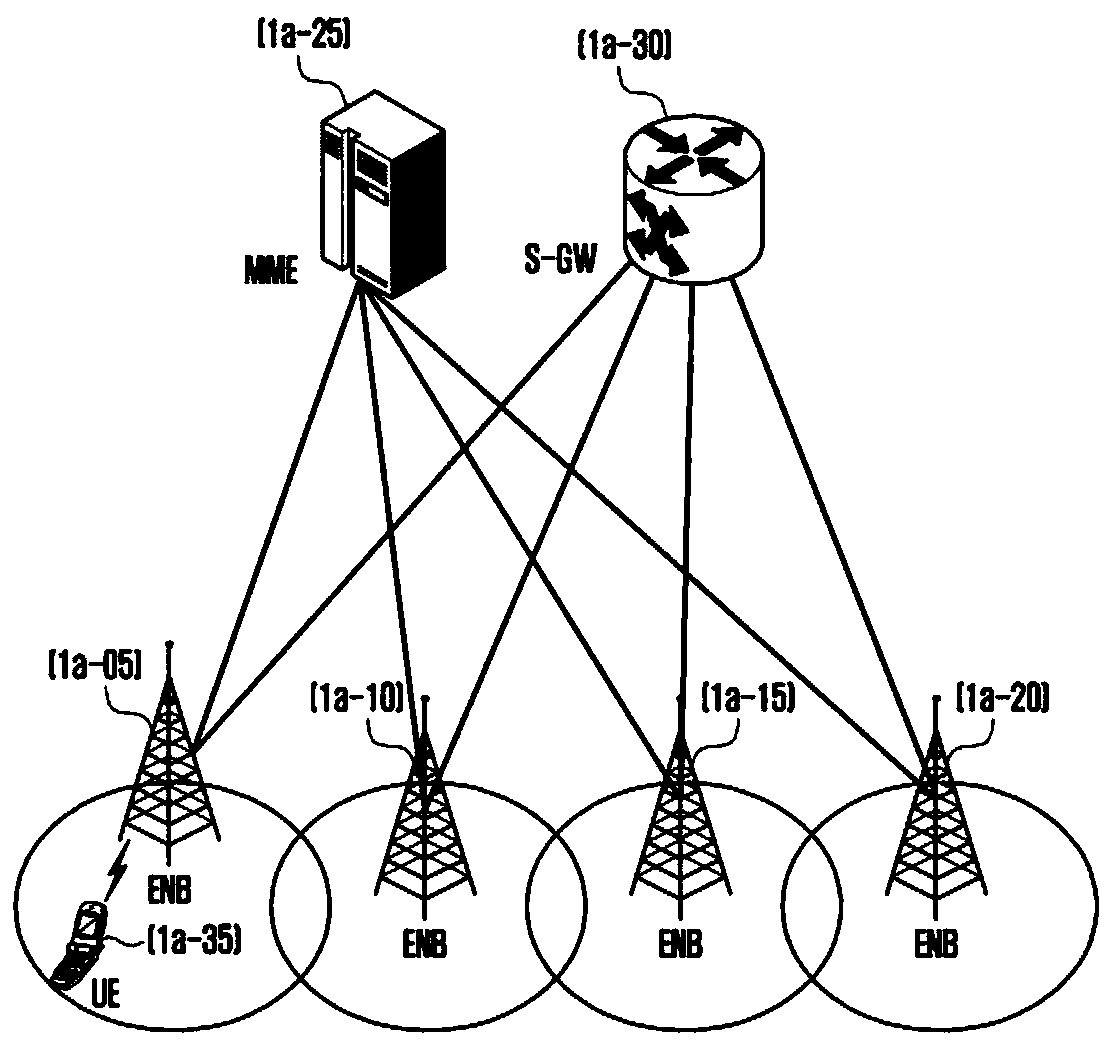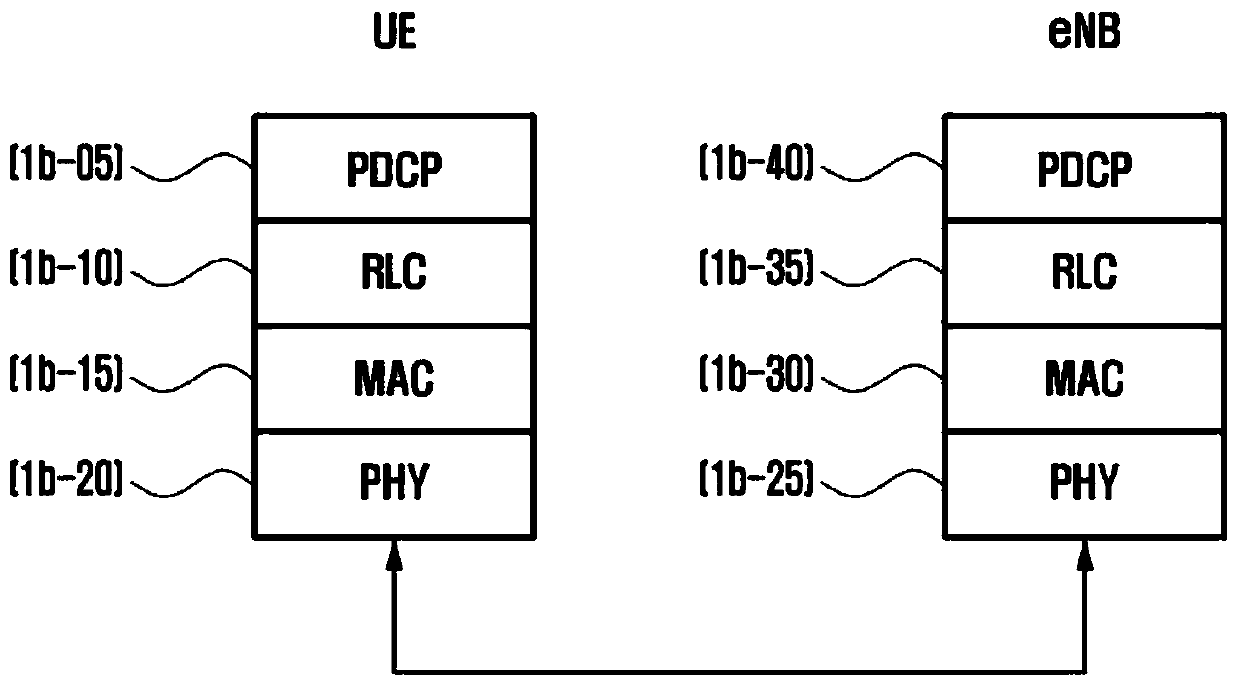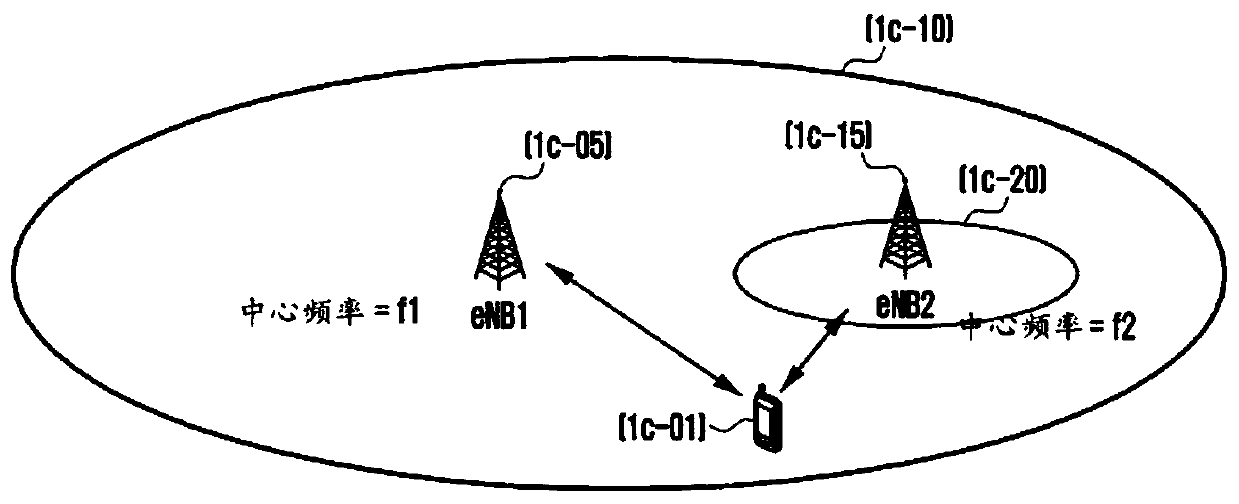Method and apparatus for transmitting data in a mobile communication system
A technology for sending data and data, which is applied in wireless communication, security devices, network traffic/resource management, etc., to achieve the effect of reducing the number, reducing the probability of handover failure, and reducing delay time
- Summary
- Abstract
- Description
- Claims
- Application Information
AI Technical Summary
Problems solved by technology
Method used
Image
Examples
no. 1 example
[0099] Figure 1a It is a diagram showing the configuration of a conventional LTE system.
[0100] refer to Figure 1a , the wireless communication system is configured to include a plurality of base stations 1a-05, 1a-10, 1a-15, and 1a-20, a mobility management entity (MME) 1a-25, and a serving gateway (S-GW) 1a-30. User equipment (hereinafter referred to as UE or terminal) 1a-35 accesses an external network through base stations 1a-05, 1a-10, 1a-15, and 1a-20 and S-GW 1a-30.
[0101] The base stations 1a-05, 1a-10, 1a-15, and 1a-20 are the access nodes of the cellular network and provide wireless access to terminals connected to the network. That is, in order to serve users' traffic, the base stations 1a-05, 1a-10, 1a-15, and 1a-20 collect status information of terminals such as buffer status, available transmission power status, channel status, etc. to perform scheduling, Thus, the connection between the terminal and a core network (core network, CN) is supported. MME 1a-...
no. 2 example
[0210] The second to fourth embodiments related to handover to be described below can be applied to a radio communication system alone or in combination.
[0211] Figure 2a It is a diagram showing the configuration of a conventional LTE system.
[0212] refer to Figure 2a , the wireless communication system is configured to include a plurality of base stations 2a-05, 2a-10, 2a-15, and 2a-20, a Mobility Management Entity (MME) 2a-20, and a Serving Gateway (S-GW) 2a-30. User equipment (hereinafter referred to as UE or terminal) 2a-35 accesses an external network through base stations 2a-05, 2a-10, 2a-15, and 2a-20 and S-GW 2a-30.
[0213] The base stations 2a-05, 2a-10, 2a-15 and 2a-20 are the access nodes of the cellular network and provide wireless access to terminals connected to the network. That is, in order to serve users' traffic, the base stations 2a-05, 2a-10, 2a-15, and 2a-20 collect state information of terminals such as buffer state, available transmission power...
no. 3 example
[0283] Figure 3a It is a diagram showing the configuration of a conventional LTE system.
[0284] refer to Figure 3a , the wireless communication system is configured to include a plurality of base stations 3a-05, 3a-10, 3a-15, and 3a-20, a Mobility Management Entity (MME) 3a-20, and a Serving Gateway (S-GW) 3a-30. User equipment (hereinafter referred to as UE or terminal) 3a-35 accesses the external network through base stations 3a-05, 3a-10, 3a-15 and 3a-20 and S-GW 3a-30.
[0285] The base stations 3a-05, 3a-10, 3a-15 and 3a-20 are the access nodes of the cellular network and provide wireless access to terminals connected to the network. That is, in order to serve the traffic of the user, the base stations 3a-05, 3a-10, 3a-15, and 3a-20 collect state information of the terminal such as buffer state, available transmission power state, channel state, etc. to perform scheduling, thereby The connection between the terminal and the core network (CN) is supported. MME 3a-2...
PUM
 Login to View More
Login to View More Abstract
Description
Claims
Application Information
 Login to View More
Login to View More - R&D
- Intellectual Property
- Life Sciences
- Materials
- Tech Scout
- Unparalleled Data Quality
- Higher Quality Content
- 60% Fewer Hallucinations
Browse by: Latest US Patents, China's latest patents, Technical Efficacy Thesaurus, Application Domain, Technology Topic, Popular Technical Reports.
© 2025 PatSnap. All rights reserved.Legal|Privacy policy|Modern Slavery Act Transparency Statement|Sitemap|About US| Contact US: help@patsnap.com



